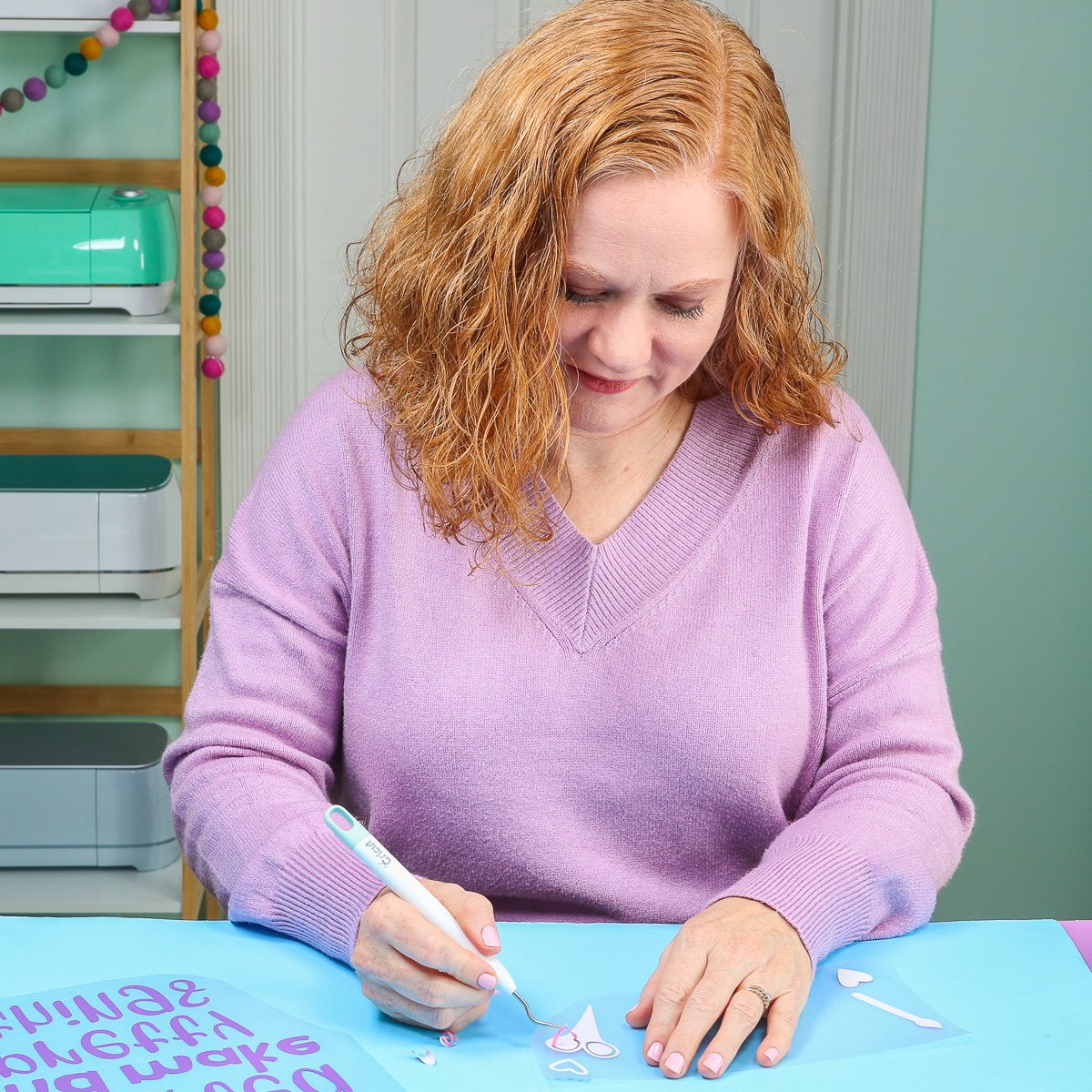This post and photos may contain Amazon or other affiliate links. If you purchase something through any link, I may receive a small commission at no extra charge to you. Any supplies used may be given to me free of charge, however, all projects and opinions are my own.
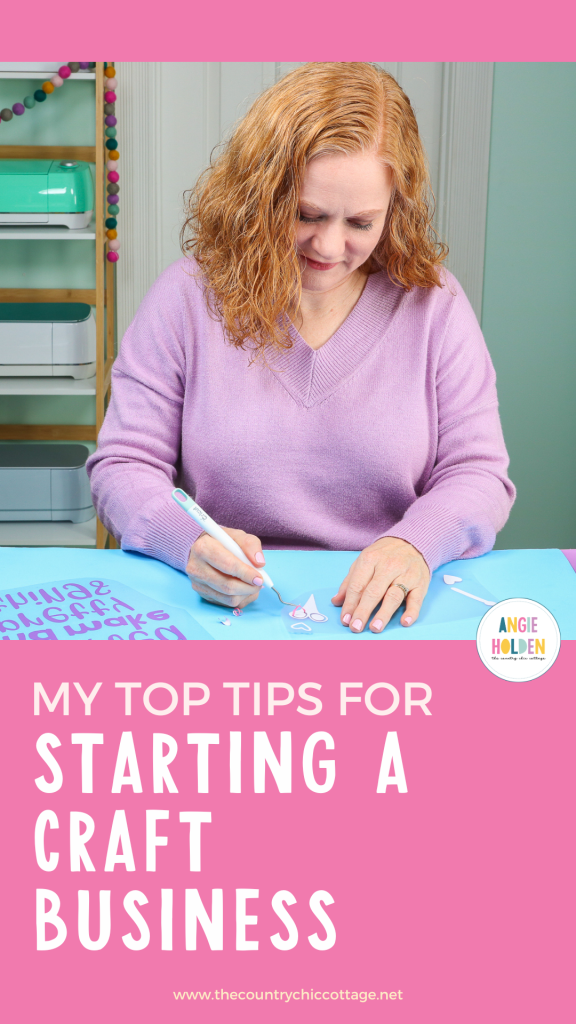
If starting a craft business and selling handmade items is something you’ve been considering, you’re going to love me today! Along with my friend Cori George from Hey, Let’s Make Stuff I’m sharing my best craft business tips to help you get started.
We’re going to be covering everything from deciding what to sell to what payment methods you should accept. If you’re looking for more info on starting a craft business, my Craft Business Prep course is filled with more information that can help you.
You can watch Cori and I discuss all of these topics in our live video by pressing play on the video below.
14 Tips for Starting a Craft Business
Craft Business Tip #1 – Do You Really Want to Sell Your Crafts?
The first thing I ask people when they say they want to start selling their crafts is “Are you sure you want to sell your crafts?” Turning your hobby into your job can be both a blessing and a curse. In my experience, having a crafting business has resulted in me crafting for fun significantly less.
When I sit down to craft, I am doing it for work. I’m filming the process, taking photos, sharing it on social media, and so on.
When talking with Cori from Hey, Let’s Make Stuff, her experience has been the same. Even when crafting for fun she’s trying to figure out how she can use what she’s making for work.
So, I recommend you really think about your crafting hobby, are you going to be sad if it starts to feel like work instead of something you do for fun? If you’re ready to proceed with your crafting business, let’s look at some other tips I recommend to get started.
Craft Business Tip #2 – Setting Boundaries
Now that you’ve decided to go ahead and start your small business, where are you going to set up shop?
Most craft businesses start at home. This can result in blurred lines between work time and home time. It can be hard to stop when work is staring you in the face.
I recommend having some sort of workspace set up and work hours established. Even if your workspace is a table in your dining area, having a specific space for your work time makes it easier to walk away when you need to.
It can be hard to get work taken care of if you’re being interrupted constantly. Look at the times when you’re less likely to be interrupted and set those as your work hours.
Craft Business Tip #3 – Don’t Be Afraid to Start
My next tip is possibly one of the most important tips I have for you and that is, don’t be afraid to start. Don’t let all the things you think you need to be doing stop you from getting started.
Starting a business is a big project with a lot of things that you can do. You don’t have to do everything in the beginning. Start where you are, get comfortable with what you are doing, and then work on the next thing.
If you wait until you have every single aspect of your business perfect before you start, you will never start. It’s not possible to do everything and have it all perfect.
Make a decision, it may be that you’ve decided that social media is how you want to market your product. Choose one platform and start doing that one. When you’ve done it for a while and you feel good about what you’re doing and how it’s going, you can add in another option.
I’m a big advocate for progress over perfection. If you want to see that in real life, scroll back on my YouTube channel to some of my first videos. If you compare them to the videos I’m making today, you’ll see there is a lot of progress.
I had to start where I was then to get where I am now. A lot of things have changed over the years in business. The things we were doing even 5 years ago are different than they are today. Start with what you have now, with what you can afford now, and know that you can change as you learn more and as your business grows.
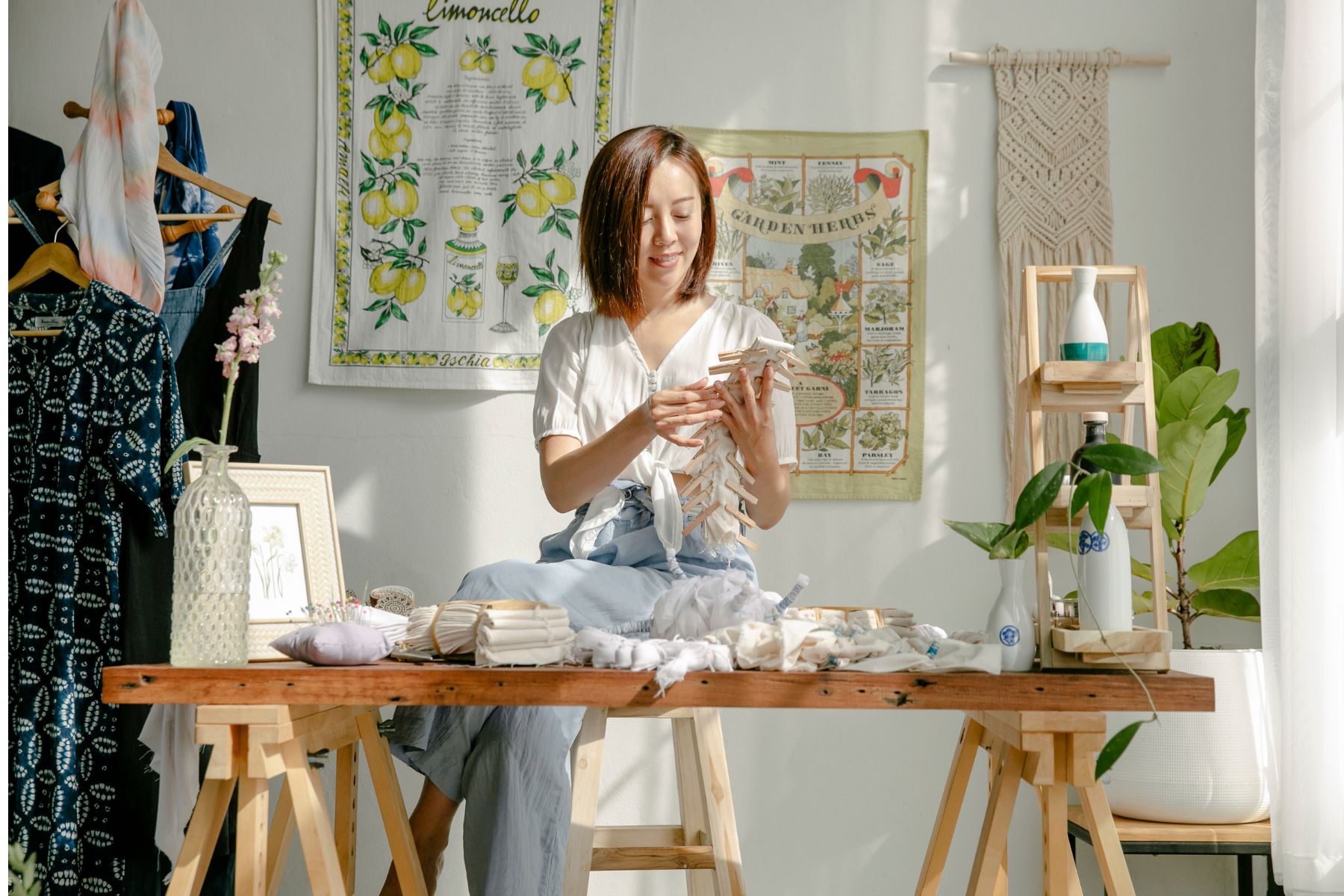
Craft Business Tip # 4 – Don’t Compare Yourself to Others
My next tip goes right along with tip number three and that is, don’t compare yourself to others. Don’t compare where you are today, starting your business, with others that have been doing this for a long time.
Some people are doing their craft business on the side along with working full time. Some people are trying to get their craft business going while also being the main caretakers of small children at home. Others may have full-time hours with no small children at home to commit to their craft business.
Everyone’s situation is different just like their business. Just because your business doesn’t look just like someone else’s doesn’t mean you’re doing anything wrong.
Remember, we’re looking at progress here, not perfection.
Craft Business Tip #5 – What Are You Going to Sell?
Tip number five is a big one. It may be one that you’ve already decided. This tip is all about deciding what to sell.
This is one of the questions I get asked the most “What should I sell?” and I have a couple of questions you should ask yourself when trying to answer this question.
The first thing is, what is something you’re passionate about? The next question is, can you make that thing over and over again without going crazy?
When I first started my Etsy store, it started as a shop that catered to weddings. If you’ve ever planned a wedding or had anything to do with a wedding, you know a lot of wedding things require making hundreds of the same item.
I learned quickly that that was not the right business for me. Making the same thing over and over again is not something I find enjoyable. This wasn’t something I was passionate about, I didn’t love doing it, and in the end that store didn’t succeed.
I had to completely change what I was selling to be successful.
Niche Product Lines
Cori has shared a lot of tips for niching down in the items you want to sell and she has two different ways she recommends niching down.
The first is to decide on something you want to sell, that you know you can make over and over again without getting burnt out. That could be something like drinkware or you could get even more specific and say only tumblers. If you are passionate about making tumblers and feel like you can make thousands of them, that may be the right business for you.
If you’re someone who wants to make a lot of different products you can niche down by theme. For example, pet products. If you choose to have a niche of pet products, you could make a wide variety of items like bandanas, food dishes, pet tags, pet clothes, etc. All of these products target the same customer, pet parents.
If you have someone on your page looking at a dog shirt and they see you have dog tags, they could want those as well. There are a lot of ways to have a specific niche that still allows you the freedom to make a variety of different products.
Having a niche theme also allows you to start small and expand your product line as you grow. You can start by selling one or two items and then add more as you grow your business.
How Many Products?
Another question I am often asked is “How many products do I need to start a crafting business?” and my recommendation is to have 5-10 products. You don’t want your shop to look empty but you also don’t need 50 products to get started.
This goes back to the don’t overthink it. Start with where you are and work on connecting with your ideal customer.
Craft Business Tip #6 – Find Your Ideal Customer
If you don’t have a customer avatar, you need one. Give your ideal customer a name, know where they live, and what their annual income is. Do they have disposable income? How much is it? What stores do they shop at? What social media platform do they spend time on?
Know the answer to all of these questions and then talk to that customer every time you send an email, every time you make a social media post, and think about them every time you create a new product. This ideal customer is who you should be making your products for each and every time!
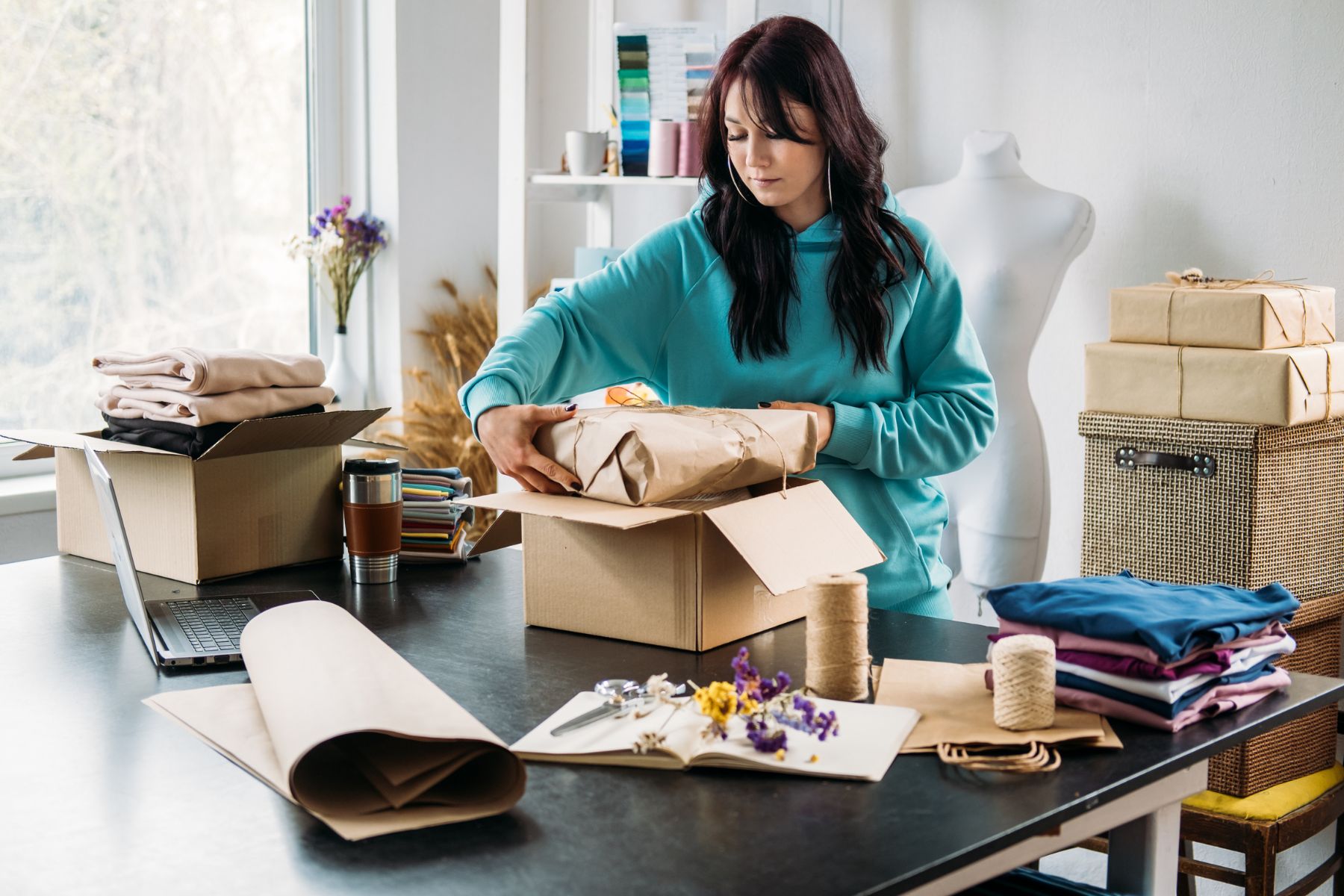
Craft Business Tip #7 – Perfect Your Product
Now that you’ve decided what you’re going to sell it’s time to perfect the products. From finding the right blank to the right packaging, it’s all part of the final product.
I don’t know about you but I’ve learned that when people purchase handmade they’re expecting something special. From the product itself to how it’s packaged, it can all make for a memorable experience that will bring customers back time and time again.
Be prepared to throw away a blank here and there while you’re learning and take the time to learn and perfect what you’re selling before you take your first order.
Along with mastering the product you’re selling, I also recommend doing a test run of the shipping process. Packages go through a lot in shipping and you want to make sure your packaging holds up. Package your item like you would for a customer and ship it to someone you know to see how it looks when it arrives. Have them film the unboxing to get a feel for how everything looks.
I also recommend adding a little something to the package. A thank you card, little sticker, special ribbon, or tissue paper. These are little touches that can make a big impact. If you’re selling in person, you could have a bag with your logo and business card with a return coupon.
In the beginning, word of mouth and return customers are going to be the best marketing you have. Having a perfect product and making yourself stand out is the best way to get those referrals.
Craft Business Tip #8 – Where to Sell Your Products
The next tip is deciding where to sell your products. There are a lot of different options these days and it can be overwhelming. There are two main options when it comes to selling handmade items: online or in person.
Selling In Person
I think when you are just getting started selling in person is a great place to start. This allows you to see how people are reacting to your products and what items they’re drawn to.
I recommend looking for small craft shows in your area. If you don’t have any of those near you, starting a Facebook group is another way to interact with potential customers to get feedback and start building your community.
Starting small is a great way to decrease stress and overwhelm when you are getting started.
Selling Online
There are a lot of options for selling online. Etsy, Amazon Handmade, TikTok Shop, Facebook Marketplace, Shopify, etc are all different options for selling online. I am sure there are even more.
When you’re first starting, I like places like Etsy because they do a lot of the marketing for you and they will collect sales tax.
Taxes can be a scary part of your business and it’s nice when you’re starting out to let someone else take care of that for you. Places like Etsy may have more fees associated with selling on their platform but them taking care of things like taxes can take a lot off of your plate.
You can continue to evaluate the different platforms as your business grows.
I will say if you want to take advantage of some of these new platforms while they’re offering reduced or free listing fees go ahead and do it. It won’t cost you anything and you can see if that is a good place to find your audience.
Craft Business Tip #9 – Branding
Branding is one of the best ways to set your business apart from other small craft businesses. We are visual people and having branding that is cohesive and eye-catching is a great way to stand out.
If you’re wondering where to spend a little money when you’re first starting, I recommend taking a photography or photo editing course. Learn how to get the photos you need for your products and how to make them stand out.
I also recommend finding a color palette that you will use to help people recognize your brand. If you look at the projects I make and the colors I use on my site, there is a lot of overlap.
You don’t have to use all of the colors in your logo but it’s good to have a variety of colors. Halloween is pretty hard for me when it comes to my color pallet, so don’t make your color pallet too narrow.
Having a set color palette helps make your photos look cohesive which is great for branding. If you are struggling with branding, try this course for help!
Mockups are another great way to make your listings look cohesive. If you’ve never used a mockup before, they are essentially a way to fake a product. Once you’ve mastered your craft, instead of making a new tumbler, for example, for every different design you have you can use a mockup to show people what that design looks like on a tumbler.
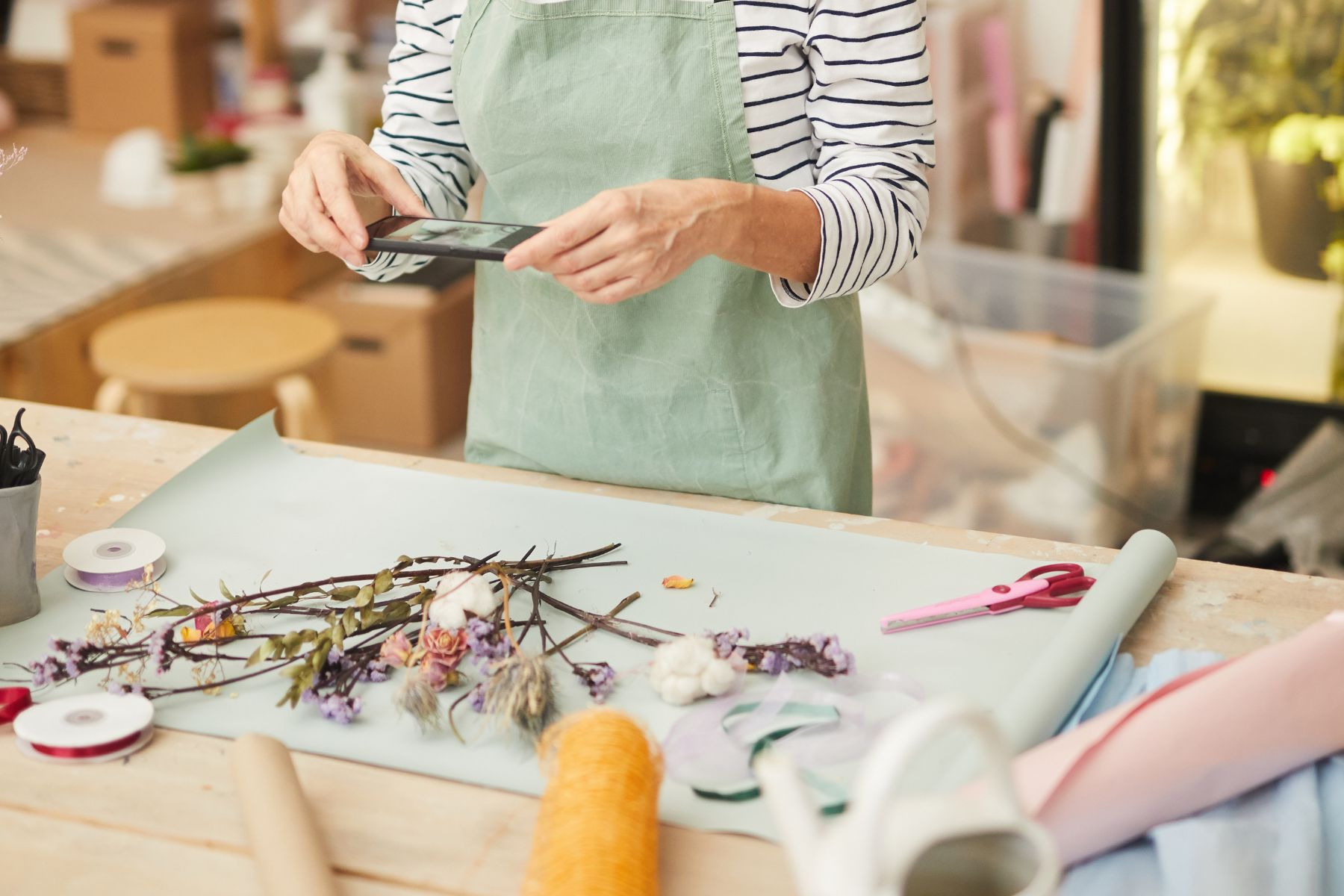
Craft Business Tip #10 – Claim Your Name
Before you decide on a name for your business, you’ll want to do some research and make sure that the name is not already taken and that isn’t associated with something you don’t want to be associated with.
Check the different major social media platforms and see if you can get your name on those as well.
Claim your name everywhere, even if you don’t plan on using it right now. You will likely want to have those in the future and you don’t want to risk someone else claiming them.
As of right now, Pinterest and Twitter have a 15-character limit. You may want to make sure that you can make your name short enough to work on all those platforms.
It doesn’t cost anything to claim your name on the different social media channels. Claiming your URL will cost a small fee but that should be the only place you need to pay to claim your name.
Craft Business Tip #11 – Start an Email List Today
While I don’t think you need to start using all of the social media platforms on day one, I do recommend starting an email list right away.
If you’ve started a business and are selling handmade items, you need an email list, I don’t care if it’s online or in person. An email list is yours, you own it. It is not subject to an algorithm change or a Google whim. When you send an email, it is going to be delivered.
Yes, the recipient has to choose to open it but it will be delivered. Being able to reach people who choose to be on your list is a great opportunity to build brand loyalty.
There are places like MailChimp that are free for the first so many email addresses and you can always change as you grow if needed. I would start with something free to begin with.
You will need a platform to send emails and always make sure you have anyone you add to your list opt in properly. Your platform will take care of other regulations such as having an opt-out in each email.
Craft Business Tip #12 – Laws, Rules, Regulations, and Taxes
I am not a tax professional or a lawyer. This section is just to help you know some things you should look into as you’re starting a business.
I recommend contacting your local small business administration, local women’s business administration, or even your Department of Revenue. Cori was telling us how the Washington Department of Revenue was really helpful to her when she started her business there.
Regulations
Things like food, products for babies and children, skincare, etc all have stringent regulations and you’ll need to make sure you’re following all of them if you’re selling any of those types of items.
These are just a few examples. Be sure to research these carefully before selling.
Taxes
Generally, you will need to collect and pay sales taxes for physical products you sell to people in your state. If your business really takes off, you may need to collect and pay taxes for other states.
I have seen in my state where they approached vendors at craft fairs to ask them how they were collecting sales tax. They had to prove they were collecting and remitting right there.
This is one of the reasons I recommend a platform for selling that does that for you. It is a lot of work, especially as you get into paying in multiple states.
You will likely need to consult a tax professional or lawyer when you’re getting started to ensure you’re taking care of everything you need to for your business.
Business Registration
Things like the type of business you need to be registered as and where you need to register vary widely by state as well as locality. This is where you local resources will help way more than any online platform.

Craft Business Tip #13 – Tackle One Thing at a Time
Overwhelm is a big thing in owning a small business. I feel it every day as I prioritize the list of things I need to do. Start small, decide on one thing you want to work on, and work on that.
As an example, social media can be very overwhelming. Choose one channel to tackle, come up with a plan, and get posting. When you get comfortable with that platform, you can add another one.
This applies to other things as well. Don’t try to start selling handmade items with 100 different craft types. You need to take time to perfect what you’re selling. Start with just a couple of things and then add more as you become comfortable with what you’re already doing.
Craft Business Tip #14 – Get Rid of Distractions
We live in a distraction-filled world. To help accomplish the things you need to do you need to eliminate distractions.
Turn off your phone, hire a babysitter, work during naptime, wake up early, or stay up late. These are all things you can do to help you check things off the to-do list. Work with the people in your circle and see if you can trade off childcare if needed so you can have some uninterrupted time to get work done.
Craft Business FAQ
We had some great questions about starting a small business come up during the live video. I wanted to include them here because I thought they were very helpful.
What is the Best Payment Method to Use?
There are a lot of payment options out there. I recently helped my son set up a side business and Square worked well for us. It was easy to set up and they have no fees for the setup process.
You can also accept multiple options which is a great way to maximize potential customers. People are more likely to purchase if it’s easy for them to pay. People also tend to have a favorite payment option.
If you can accept multiple payments like Venmo, PayPal, Zelle, and CashApp, you’re likely to get more customers. Grab the QR codes and print out a sign giving multiple options easily when selling in person.
How to Prioritize Time as a Small Business Owner
A large portion of people who are starting a small crafting business are also working a full-time job. Set work time that you turn off everything to reduce distractions. Be intentional with the time you do have for your side job.
Prioritize your to-do list. There are a couple of ways to do that. I have three buckets:
- Must do.
- Want to do.
- If I have time to do.
Things like making and shipping products would fall into the must-do category. Social media and other marketing would fall into the want-to-do or if I have time categories.
Automate what you can. Some programs can help you by automatically emailing your list when you have a new product or are running a sale. As your business grows, find ways to automate what you can.
Learn when you are most productive. I used to have to work late at night when my kids were younger and I was working a full-time job. Now, I am most productive early in the day so I do everything that takes a lot of brain power during that time.
Make a list of the things you want to do and need to do and color code it based on how much time it will take to accomplish. This is a great way to get things done no matter how much time you have available.
If you have 15 minutes, you can look at your list and find something that should only take 15 minutes and get that checked off. When you have more time, find something on your list that requires more time and brain power and check that one off.
How Do You Decide on Your Customer Avatar?
This can be done in a couple of ways. You can try to come up with who your ideal customer is and build your avatar around that, you will need to adjust it over time.
If you’ve already started your business, look at who is purchasing your items. Talk to them if you can. If you have an email list of people who have purchased from you, send out a questionnaire.
Remember, your avatar will likely change over time. As you age and your products evolve, your avatar may age and evolve as well.
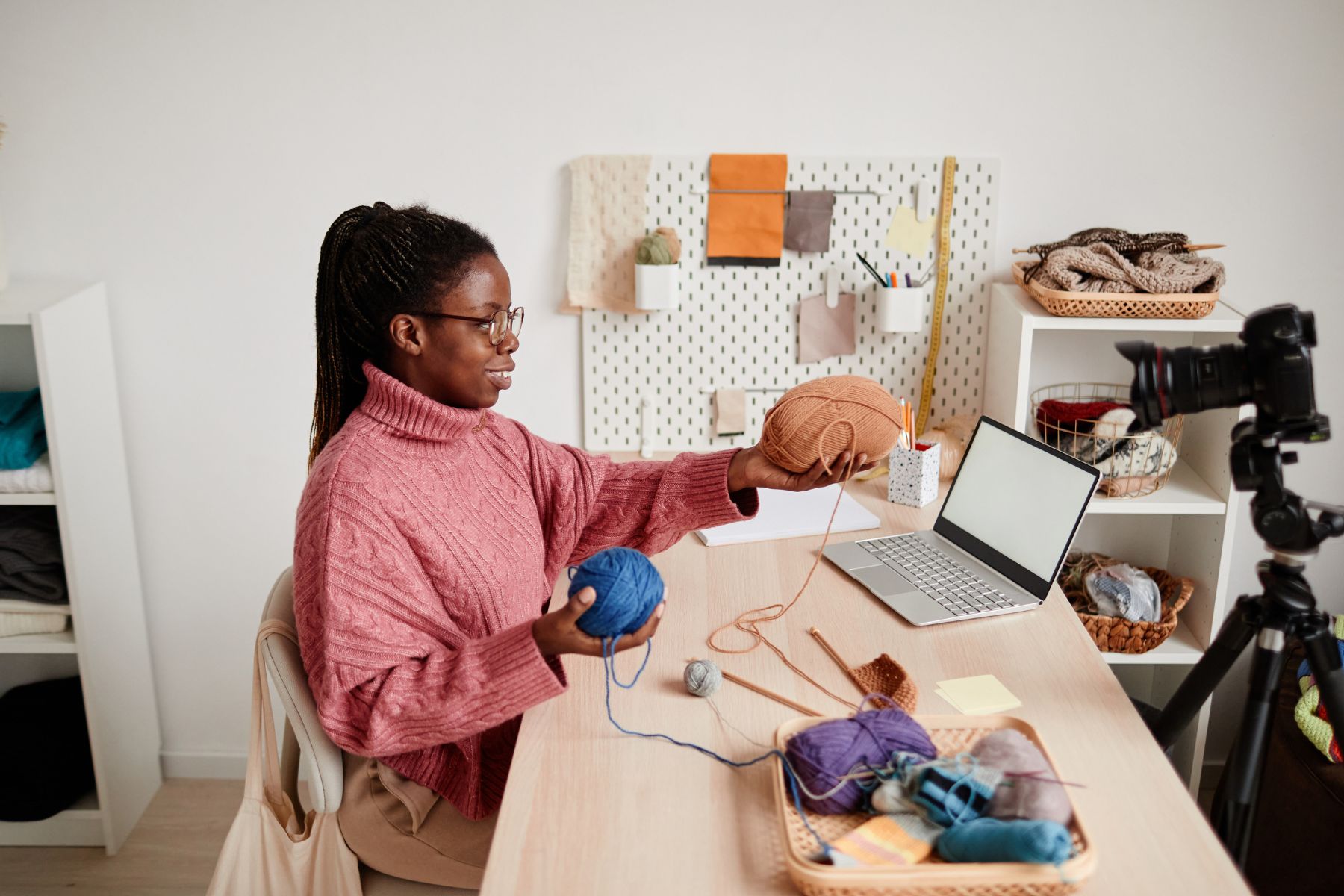
Is Selling a Skill or Classes a Handmade Business?
Yes, it is! I sell digital items in my Shopify store but I also sell my skills via YouTube videos and the courses I host.
Michaels even has a new Handmade Marketplace and they allow you to host classes on their marketplace. That is a great place to look into if you want to sell classes online.
You can also look at hosting classes in your own area. There are a variety of different ways to do this. @TabithaSewer on Instagram sells sewing classes where she brings people in and teaches them how to sew. If you’re looking at hosting classes in your area, she is a good person to follow to see how she’s set up her business.
My friend Tisa Jackson @this.is.tisa on Instagram does her class a different way. She sends out the box of supplies to people who want to join the class and then she does a Live where she teaches them how to make the craft with those supplies.
These are both great ways to host a class either locally or online.
Can You Really Make a Living Selling Crafts?
Yes, there are definitely people making a full-time income selling handmade items. I think you need to be very intentional in what you’re selling and build a community.
@bakeryteeco on Instagram has done a wonderful job building a community and being intentional in her products. She has targeted chefs, people who cook, and people with a sense of humor with her butter shirts. She knows her audience and she speaks to them.
I also think when you start getting into the type of money that supports a family you will need help. Whether you choose to only sell products or move into courses and YouTube, etc, you will eventually need help.
You see me, Angie Holden, but I am not the only person who works on my stuff. I have a team of people who help and support everything I do. I don’t do this alone.
In the beginning, you can bring in family members and friends to see if they can help. Pay them a decent wage and you can potentially help out someone who could use a little side hustle of their own.
How to Make Backgrounds Cohesive?
Okay, we’re pulling the curtain back here. Your new photography best friend is posterboard and foam core board. I own a few colors of posterboard and foam core that match my branding and I take the majority of my photos on those.
Cori always recommends brightening your photo more than you think you need to. Most people look at photos on their phones and don’t have the brightness up all the way. You want photos that pop off the screen and bright photos really pop.
I use the SnapSeed app on my phone for editing. It is a paid app but it’s a one-time fee and was only a few dollars when I got it.
Another great option is the Adobe Lightroom app. It is a free app and has a lot of amazing features. You can edit one photo and then sync those edits to all your other photos. You don’t have to edit each one individually.
I heard you can’t just send people emails unless they have opted in. Is this true?
This is very true. To send an email to someone for your business, they need to opt into your email list. You need a way to collect email addresses and MailChimp does have a free option.
MailChimp will have an opt-in form. Subscribers opt-in by giving you their email address. The important thing here is that when you send an email they have the opportunity to opt-out of your emails. They can unsubscribe from emails easily which is a requirement.
Have more questions?
You can also ask us any questions you have about starting or growing your small business by filling out our questions form.
Crafting for Profit Live
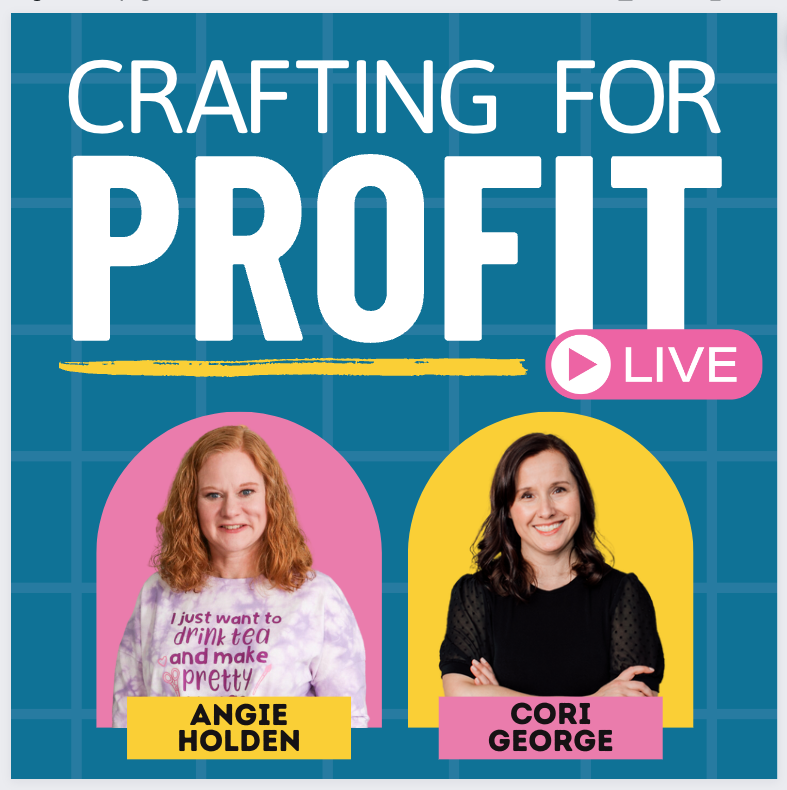
I hope you’ve enjoyed learning these crafting business tips today and that you’ve found them helpful.
If you haven’t already heard, Cori and I started a podcast called Crafting for Profit Live! We’re so excited to bring you more crafting business tips.
Next week, we’ll be chatting with our good friend Nicole Holleman, you may know her as Nicole Baker. She is our mindset guru and we think chatting with her about how we deal with being small business owners is a great way to get our minds in the right place.
If you want to stay up to date on all things Crafting for Profit Live, sign up for our email list so you can be notified every time there is a new episode.

The post 14 Tips for Selling Handmade Items the RIGHT Way! appeared first on Patabook Home Improvements.

